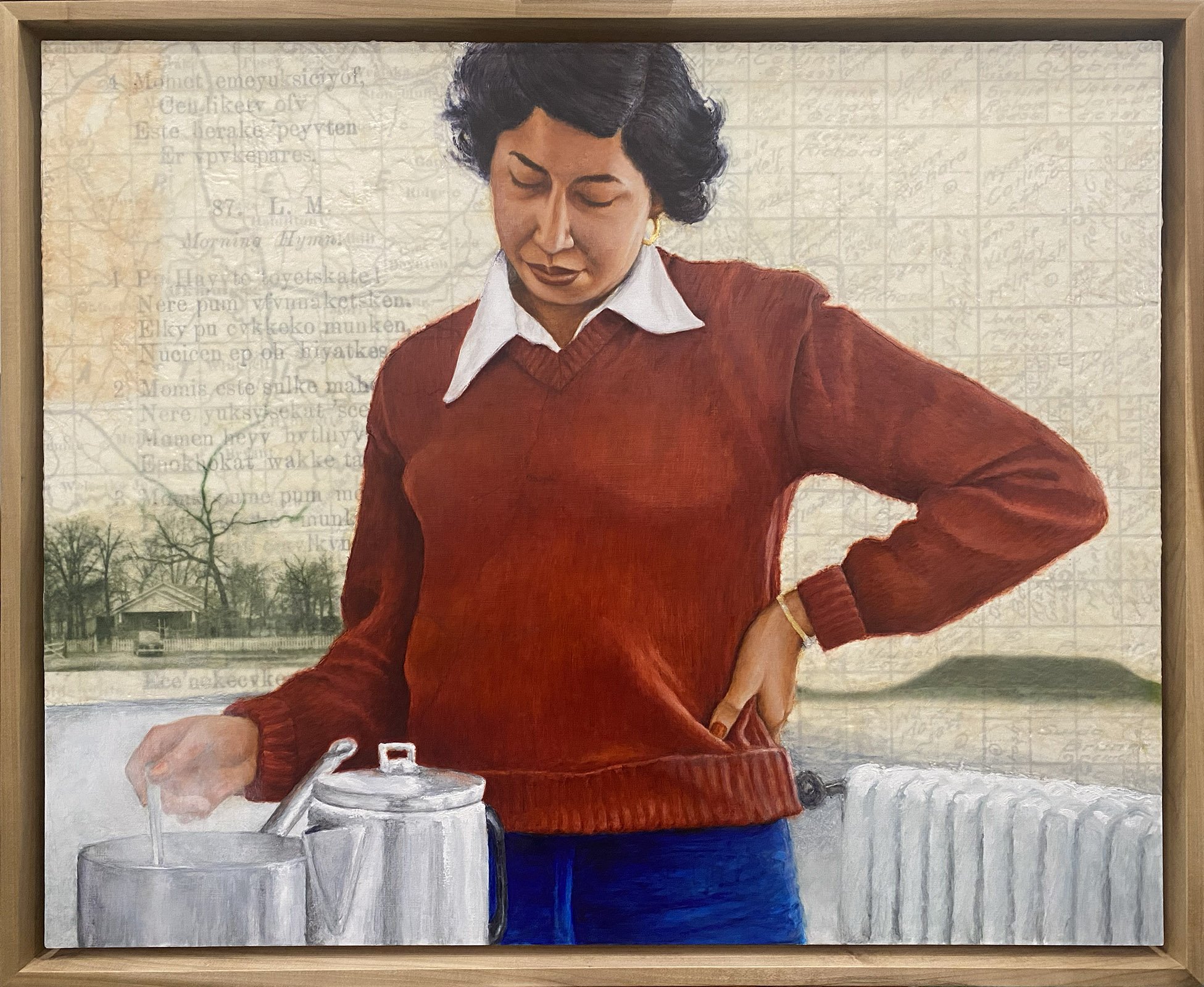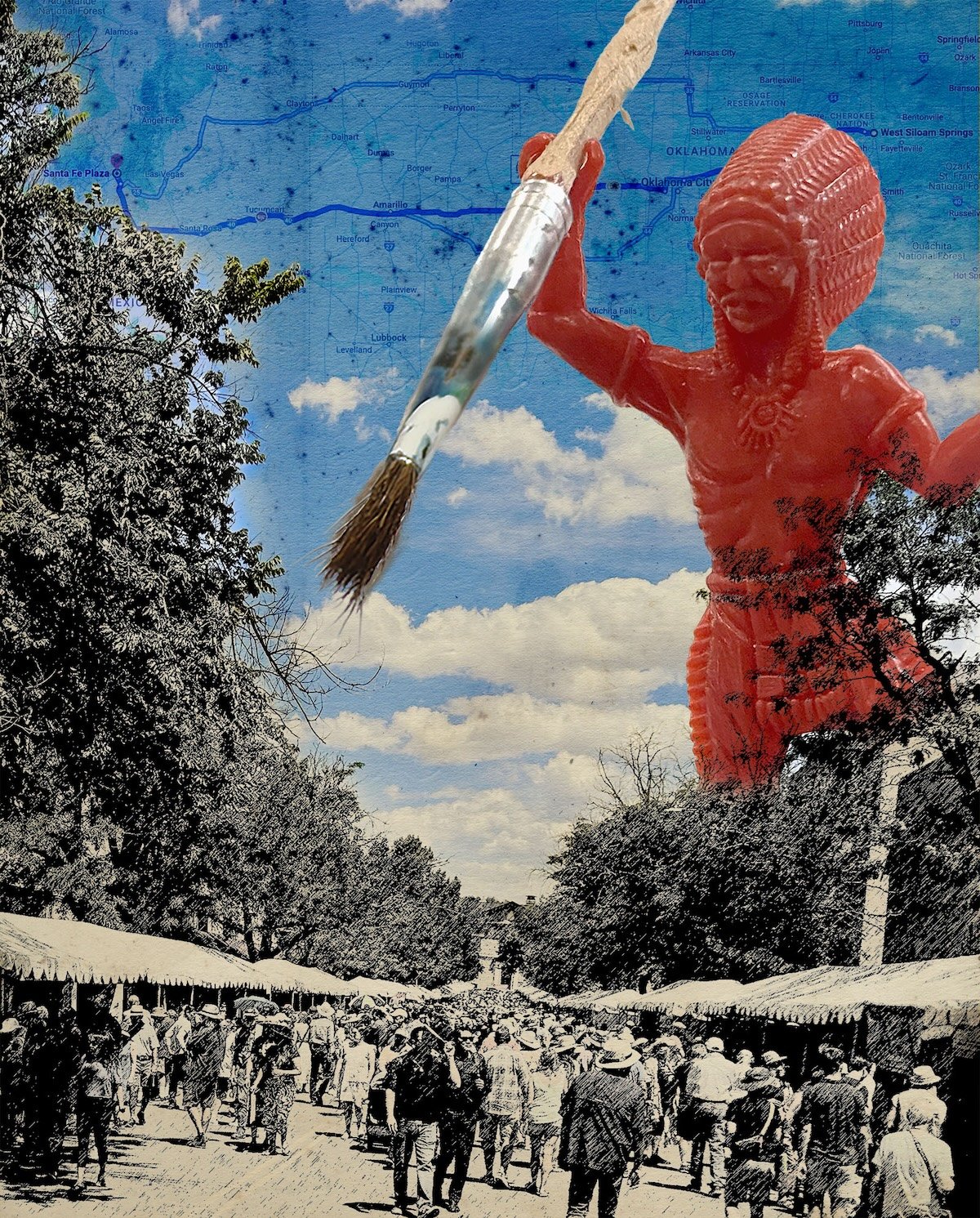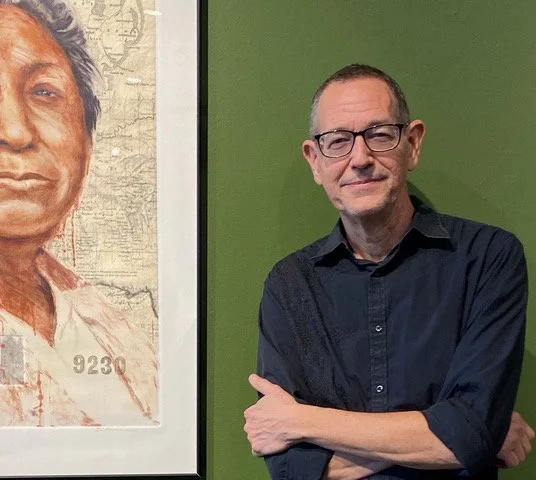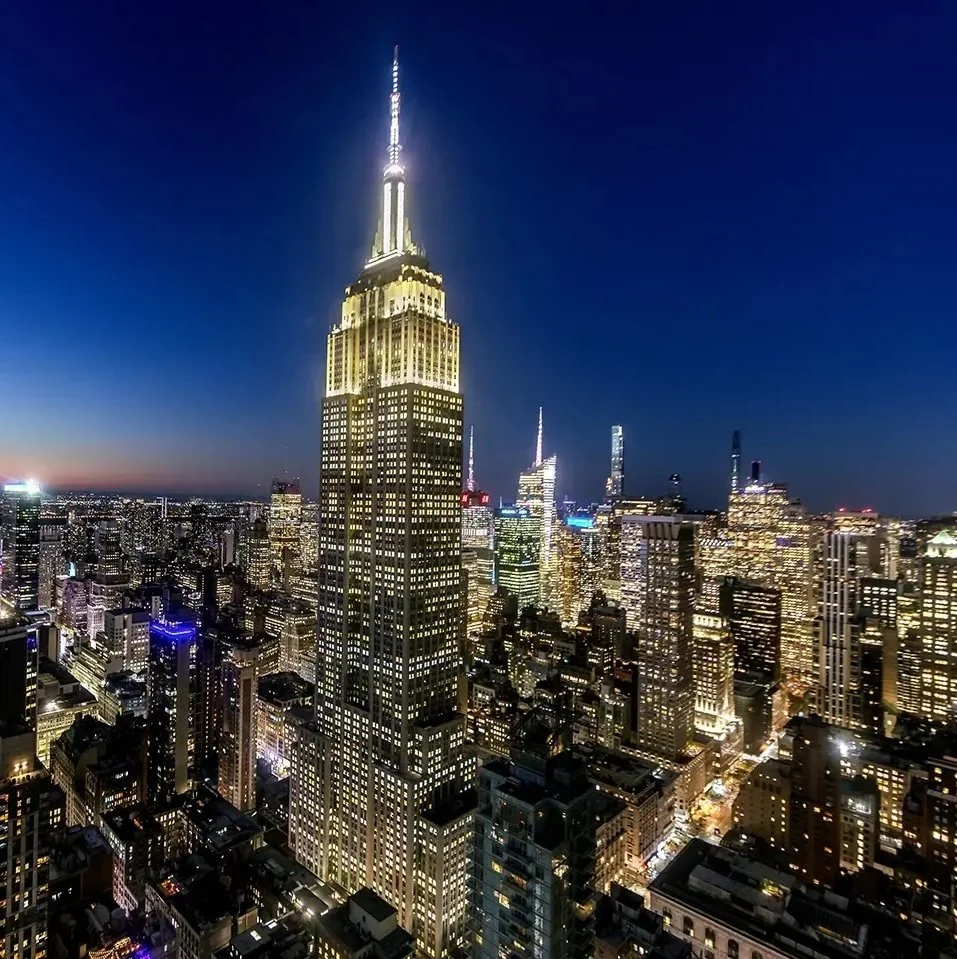Interview with artist Bobby C. Martin
Bobby C. Martin is Professor of Visual Arts and Gallery Director at John Brown University in Siloam Spring, Arkansas. He is a printmaker and painter whose mixed media works celebrate his Native American culture and heritage. His artwork is exhibited and collected internationally and is in numerous museum permanent collections, including the Hood Museum of Art at Dartmouth College, Philbrook Museum of Art, Gilcrease Museum, Sam Noble Museum, British Library, Museum of the Great Plains, Georgia Museum of Art, and Crystal Bridges Museum of American Art. More of Bobby’s work can be found at WYLD Gallery in Austin, Texas, Exhibit C Gallery in Oklahoma City, Oklahoma, Art Ventures NWA in Fayetteville, Arkansas, and at his website bobbycmartin.com.





AAS: Bobby, tell me about yourself. Where did you grow up?
BCM: I was born and lived most of my life in Tahlequah, Oklahoma. After about a decade of making a meager living as a professional musician, I decided to go back to school, and got my undergraduate degree with a double major in Fine Art and Native Studies at Northeastern State University in Tahlequah and then went on to get an MFA in printmaking and drawing at the University of Arkansas. My first job out of grad school was with the Gilcrease Museum in Tulsa, where I was the one-person graphic design department. In 2000, I accepted an assistant professor position (my first time teaching anywhere) at my alma mater, Northeastern State. In 2008 I was hired as an associate professor at John Brown University, teaching studio art, mostly printmaking courses. This May, I will retire from JBU after 25 years of university teaching. During this whole time, I’ve been making art pretty much nonstop around my full-time teaching gig.
AAS: Did you have any artist role models growing up?
BCM: I started drawing when I was in grade school, mainly because I stumbled across a correspondence course instruction book (anyone remember those?) of my dad’s—he was interested in becoming a cartoonist. Well, I pored over the drawings in that book and marveled that I could sort of draw things that looked like pictures in the book. I stayed interested in art until I picked up a guitar in my teens and decided I wanted to be a rock star :). So from that point I basically ignored making any visual art until I went back to school in my late 20s and rediscovered that I could make art and get real satisfaction in the making. Thankfully my parents, and later my wife, were and are wonderfully supportive through all my adventures and misadventures.
AAS: I want to ask you first about April 55. It is a striking image for sure, even more powerful because of what I think is shown in the background. What are you showing us in this image?
April 55, acrylic and graphite on canvas, 30” x 45”
BCM: This painting was done quite early in my career, when I was still in grad school at U of A. At that time, I had just began using my family’s old photos from the 1940s and 1950s, of which we have an amazing assortment. I began originally using the images because they were just great subject matter, but I soon realized that there were more stories contained in those old family photos that needed to be told. Most of those stories had to do with Native history, especially as it related to my people, the Muscogee Nation of Oklahoma. This painting was one of the earliest examples of my work that included other material besides simply the photographic reference. In this case, the names and numbers in the background come from the Dawes Census Rolls, an attempt by the U.S. government to break apart tribally held land in Indian Territory in the late 19th-early 20th century, in order to shrink tribal territory for non-Native settlement. It’s still a political reality and hot topic today in many tribal nations. Even today, to be able to obtain citizenship in the Muscogee Nation (and many other tribes) you must be able to prove direct lineage to someone on the Dawes Rolls. My grandmother and great grandfather were on the original rolls, and their names appear in the background list of the painting.
Mom & Mary Ann (The Redhead), oil, collage and screenprint on canvas mounted on panel, 72” x 48”
AAS: Mom & Mary Ann (The Redhead) is a lovely mixed media piece. Here again, I guess the underpainting is an important part of their story?
BCM: That’s Mom on the left, with her best friend Mary Ann. Mary Ann, for a time after high school, played for an all-women’s exhibition basketball team known as the All-American Redheads. They were like the female version of the Harlem Globetrotters and toured around the Midwest in the woody van you see in the painting. The background contains one of my latest obsessions—maps. I love the artistic and organic nature of maps, and also the stories they tell (or don’t tell). In this case, I used old maps that showed the parts of Oklahoma that these women were from, and some of the surrounding country that the ladies in their van would have traveled.
AAS: Has there been anything surprising that you learned about yourself during your journey of rediscovery through family photographs?
BCM: I feel like almost all the work I do is some sort of self-portrait. I think using the historic family photos has helped me sort through some of the awful histories of my ancestors and also celebrate their resilience through the fact that we’re still here and thriving and I’m able to tell their stories.
AAS: Who is the woman in But You Don’t Look Indian? Tell me about it.
But You Don’t Look Indian, oil, encaustic, paper, cloth, license plate, teeth, grandma’s crocheted doilies mounted on birch panel, 68” x 51”
BCM: This is Mom, who often shows up in my work. This piece, in particular, is totally my version of a self-portrait, done in response to comments that I often heard at Native art markets (although not as much recently) to the effect of “you don’t look Indian.” My response was usually, what is an Indian supposed to look like? So, I decided to paint my beautiful Native mother, and throw in pretty much everything that I felt like had some connection to my heritage. There are maps, an Oklahoma license plate, images of my ancestors and my children, even a couple of my son’s teeth in case anyone wanted to do a DNA test. The necklace that Mom has on is a doily crocheted by my grandmother that I collaged into the work. I just wanted to go totally overboard in saying, “Is this what an Indian should look like?”
AAS: Do you get the same reactions from Native Americans as non-Native Americans when they see your exhibitions?
BCM: That’s a great question. I’ve found that one of the things that has kept me coming back to the well of these great old family images is the reactions of both Natives and non-Natives. That response is usually something like, “That reminds of Grandma (or Aunt Lucille or whoever). That universal recognition of their own family has crossed all ethnic boundaries, no matter where I’ve shown my work. And it’s that connection with family and family stories and shared histories that has been really satisfying to me. I’ve had the opportunity to show in venues and exhibitions all over the world, and those responses show up every time.
AAS: Printmaking is something very important to you and something you teach at John Brown University and still do at Martin Mountain Studio. What attracted you to printmaking? And tell me about Red Dancer. It is beautifully depicted, almost as a spirit.
Red Dancer, 4-color screenprint, edition of 25, 23” x 16”
BCM: Red Dancer is a 4-color screenprint from a photo I took during a powwow of a traditional jingle dress dancer. The blue and orangeish colors were inspired by a movie I had just watched on TV, the old classic Lawrence of Arabia, and the expanses of sand and sky in the movie. I think that’s the only piece I’ve ever done inspired by a movie, but I really like the way it turned out, it’s quite different from most of my work. That’s lovely that you see it as spirit-like.
I’ve been in love with printmaking ever since undergrad, when I first took an intro to printmaking class, which is a class that I now teach at JBU. I fell in love with the smell of the ink and the feel of the paper. I’ve never grown tired of printmaking’s wonderful whole-brained creative challenge of coming up with a good design and then having to successfully go through demanding craftsmanship processes to make that design come alive. And the printmaking classes have been my favorites to teach because of that. The JBU art department has a wonderful printmaking space we call the Print Hive, and it’s given me a lot of satisfaction to see student interest grow to the point where we now offer a printmaking minor within the studio art program there.
AAS: I want to ask you about your Clyde Series. It is somewhat irreverent, maybe allegorical? What prompted you to start that series?
BCM: Clyde has been an ongoing side project for several years now. Clyde himself, the little plastic figure, has been a fixture in my studio for quite a while, long before he ever made his first public appearance. A few years ago, my friend Tony Tiger and I were in London for a conference, and while out exploring we came across an antique print shop. There, the gracious owners, David and Harriett, gifted us with some small antique bookplate engravings of ‘North American Indians.’ When I got back home, I decided to do a bit of research. I found that these engraved images originated with Jonathan Carver’s journal sketches that appeared in Travels through the Interior Parts of North America, in the Years 1766, 1767, and 1768. The book “became a bestseller in London in the 1780s, and arguments over its author’s accuracy and honesty have raged ever since.” The engravings that we received copied Carver’s figures almost exactly, but in an entirely different setting. The earlier journal drawings were based on people located in the upper Mississippi River region, but ours seemed to be living in a much more tropical climate. As I did more Google searching, I found that these figures had been used multiple times, but almost every time in a completely new environment or landscape. From earliest contact, there existed the idea all Indians were alike, no matter where we were located—a time-tested strategy to dehumanize whole people groups.
This got me to reflecting on the nature of using placeholder symbols for actual people, a practice that continues unabated to the present day. In America, sports team mascots, food companies and truck stop gift shops all trade on the use of stereotypes and cartoonish symbols of ‘Indians.’ Misconceptions and generalizations of North American Native peoples remain part of the culture, effectively obscuring the actual communities who, by the way, are still alive and well. It was clear that I had to create some kind of artwork responding to these little engravings of ‘North American Indians.’
That’s when I decided to get my studio mascot, Clyde, involved. An enduring stereotype himself, Clyde was a willing representative to send to battle against the forces of misinformation and stereotyping. Though he seems a mere plastic toy, in my world his stature has grown to Godzilla-sized proportions as he looms over the horizon to face down the ‘fake news’ of colonialization narratives. As a printmaker myself, I felt it crucial to maintain the line-by-line, hand engraved accuracy of the original prints to do justice to the concept. I enlarged the engravings to five times their original size and began the grueling work of hand-engraving the plates. It came to feel like a reclamation of sovereignty as I worked line by line to reproduce the originals. An unexpected bonus was finding an exact computer match of the typeface used in the original prints, which I used to engrave Clyde’s byline into the plate. The finishing touch was overprinting the engraved plates on a traditional etching press over the top of a color digital print of Clyde in all his oversized glory. The process of painstaking, hand-rendered printmaking combined with computer-generated digital imagery somehow seemed an appropriate metaphor for the continued battle across time against the dehumanizing aspects of stereotypes.



Clyde has continued to show up at various locations when his mood strikes. Just last year, a watercolor version of Clyde striding across an 1890s map of Indian Territory was acquired by the British Library and will be featured in an exhibition and catalog entitled Secret Maps, which will open in October of this year. Most recently, just last fall Clyde appeared in Santa Fe just in time for the Santa Fe Indian Market, the premier Native art market in the U.S. that I have participated in for the last decade or so. He was featured in a purely digital print for his Santa Fe debut, and the piece was acquired for the OZ Art NWA collection in Bentonville. I’m sure his adventures are not over, he may show up again soon…
AAS: You are also a muralist. Unbroken: The Council Oak Story is a spectacular work. Tell me about it.
BCM: Thank you! This is my most ambitious work to date and was a commission I received from the Muscogee Nation to create a site-specific mural installation for the main entry lobby to the newly remodeled Council Oak Comprehensive Healthcare facility in Tulsa. The mural is part of a larger public art project entitled “The Cvfeknicetv Collection.” Recognizing there is “healing through art,” this collection showcases the diverse works of Muscogee artists from across the country.
It is an 80-foot long, 26 panel installation, located in the entry lobby of Council Oak, and relates the history of the Council Oak tree—a surviving tree near downtown Tulsa that marks not only the reestablishment of the Muscogee people in Oklahoma (then Indian Territory) after forced removal, but also the founding of Tulsa itself, and encompasses the history of the tribe and of Oklahoma to the present day. It’s been one of my most satisfying projects, because I was able to create a work that told the stories of our people, and it is located in a place that is dedicated to using art as a healing property. The large painting of my Mom, But You Don’t Look Indian, also hangs in a place of prominence at Council Oak.


AAS: Tell me about your most recent project Altars of Reconciliation.
Surrounded by Herron Ladies at the Camphouse, charcoal and 24k gold leaf on mulberry paper, 24” x 36”
BCM: Altars of Reconciliation features works from my good friends and fellow Native artists Erin Shaw (Chickasaw) and Tony Tiger (Sac & Fox/Muscogee/Seminole) and myself. The exhibition explores a theme rarely confronted in the art world: the practice of Christianity among Native peoples. There is and continues to be a long, rich and layered history of Native churches and Christian tradition, but there is an equally long sense of tension and conflict among tribal peoples about questions of faith. By facing these faith struggles and transformations through these “altarpieces,” we seek to bring about healthy discussion and awareness of how Christianity has played a historic (and continuing) role among Native peoples — and in the bigger picture, we hope to engage people in thinking about the role of faith in their own lives.
In Surrounded by Herron Ladies at the Camphouse, is from a photo my cousin (the young lady on the front left) showed me several years ago. I instantly knew that it was a special image that I had to make a piece of art out of. That’s an 8-year-old me in the middle of an amazing group of women—my Granny, Mom and aunties—at the Indian church grounds that my mom’s family attended. This was how I felt growing up, being surrounded and protected—physically, spiritually, emotionally—by these powerful Native women. I added the gold leaf not to treat them like icons to worship, but more to just bring honor and recognition to the role they (and women generally) played in the lives of those in their care.
The exhibition just came off the road after showing at multiple venues across the U.S. over the last three years. There will be one last hurrah showing at my home church in Siloam Springs, First Baptist Church Siloam. The show will open on Thursday evening, May 8. All three artists will be in attendance, and we’ll participate in a panel discussion as a wrap-up to the Altars experience, before the work returns to our studios.
The current project I am working on at Martin Mountain Studio is a large (7x10 feet) mixed media painting, based on (of course) an old family photo, this time blown up to life size. Entitled The Guardians, it depicts me as a child surrounded by these amazing Native women — Granny, Mom, and aunties on an Easter Sunday at our family church grounds. I’m excited to see this painting develop over the next few weeks, and I just received exciting news last week that upon completion, The Guardians will be purchased by Crystal Bridges Museum for their permanent collection!


